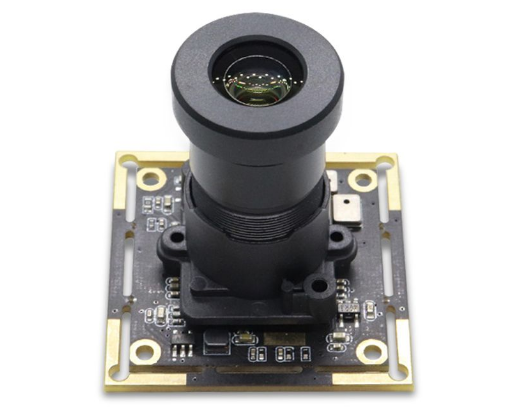What is a Zoom Camera Module?
A Zoom Camera Module is a sophisticated optical component integrated into various devices to enable variable focal length capabilities, allowing users to zoom in or out while capturing images or videos. This specialized module consists of several intricate components, including lenses, sensors, motors, and control electronics, designed to provide a range of focal lengths for magnification and flexibility in capturing scenes at different distances. Such modules are commonly utilized in smartphones, digital cameras, webcams, surveillance systems, and other imaging devices, contributing significantly to their functionality and versatility.
Components and Working Principle
1. Lenses:
- Zoom Lens System: The core of the zoom camera module comprises multiple lenses arranged in a complex configuration. These lenses can move or adjust positions relative to each other to modify the focal length and achieve optical zoom.
- Optical Elements: Various optical elements, such as aspherical lenses, prism systems, or specialized coatings, are utilized to enhance image quality, correct aberrations, and optimize light transmission.
2. Image Sensor:
- A high-resolution image sensor, such as a CMOS or CCD sensor, captures light transmitted through the lens system, converting it into digital signals to create the final image or video.
3. Motors and Actuators:
- Precision motors and actuators are employed to physically move the lenses within the module. These motors facilitate changes in focal length by adjusting the lens elements, enabling smooth and precise zooming functionality.
4. Control Electronics:
- Integrated control electronics manage the movement of lenses based on user input. These electronics receive commands from the device's software or user interface to control zoom levels, focus, and other settings.
5. Image Processing Algorithms:
- Sophisticated algorithms process the captured images or video streams to optimize quality, reduce noise, and enhance overall output, especially when zoomed in.

Types of Zoom in Camera Modules
1. Optical Zoom:
- Optical zoom involves physical adjustments in the lens system to change the focal length. This method preserves image quality by magnifying the actual captured scene. It allows users to zoom in closer to distant subjects without sacrificing image clarity.
2. Digital Zoom:
- Digital zoom, in contrast, involves enlarging the image digitally after it's captured by cropping and interpolating pixels. While digital zoom increases magnification, it often results in reduced image quality and loss of details due to pixelation.
Recommended article:
What Are the Best Mpi Accessories for You?
Are UV LED Lamps Revolutionizing Non-Destructive Testing Efficiency and Safety?
How to Use Api Rp 2x Effectively?
Unveiling Ultrasonic Flaw Detection: Top FAQs Answered!
Mastering the Film Tensile Test ASTM: A Complete Guide
Are You Prepared for Sudden Load Surges with Board Bursting Testing?
How Can Pressure Decay Leak Testers Revolutionize Quality Control?
3. Hybrid Zoom:
- Some modern camera modules incorporate a combination of optical and digital zoom techniques, known as hybrid zoom. This approach leverages the benefits of optical zoom for high-quality magnification and supplements it with digital zoom for further enhancement while maintaining better image integrity.
Advantages and Applications
1. Enhanced Photography and Videography:
- Zoom camera modules empower users to capture a wide range of scenes, from wide-angle landscapes to detailed close-ups, without physically moving closer to the subject. This flexibility is particularly useful in photography and videography, allowing for creativity and diverse perspectives.
2. Convenience and Versatility:
- Devices equipped with zoom camera modules offer convenience and versatility, eliminating the need to carry additional lenses or equipment for different focal lengths. This feature is especially beneficial in compact devices like smartphones, making them more appealing to consumers.
3. Surveillance and Security:
- Surveillance systems and security cameras benefit significantly from zoom camera modules. These modules enable operators to zoom in on specific areas of interest, capturing details from a distance, and enhancing the effectiveness of surveillance operations.
4. Video Conferencing and Communication:
- Webcams and cameras in laptops or other communication devices utilize zoom camera modules to facilitate clearer video conferencing or communication, allowing users to adjust the frame to focus on individuals or objects during calls.
Considerations and Challenges
1. Image Quality:
- Maintaining high image quality, especially at higher zoom levels, can be challenging due to potential issues like distortion, aberrations, or reduced light transmission. Engineers continuously work to optimize these modules for improved performance.
2. Size and Complexity:
- Integrating a zoom camera module into smaller devices like smartphones requires careful design considerations due to space constraints. Balancing functionality with device size and power consumption is a constant challenge.
3. Cost and Manufacturing Complexity:
- Zoom camera modules, especially those with high optical performance, can add to the manufacturing cost of devices. The intricate design and precision manufacturing involved in these modules contribute to their overall complexity and cost.
Conclusion
The Zoom Camera Module represents a significant advancement in imaging technology, enabling devices to offer variable focal lengths and zoom capabilities for capturing diverse scenes. Through a combination of lenses, sensors, motors, and advanced electronics, these modules empower users to explore creative photography and videography while enhancing convenience and versatility across various applications. Continuous advancements in optics, miniaturization, and image processing algorithms contribute to the evolution of these modules, ensuring improved image quality and functionality in future generations of devices.
Recommended article:Exploring Popular Applications of Texture Analyzers
How to Use a Syringe Needle Penetration Tester?
Exploring Ndt UV LED Lamp Applications and Benefits
Key Factors in Choosing an Ajr Pen Hardness Tester
Top Wholesale Stopwatches: Your Ultimate Buying Guide
10 Key Applications of Function Generators in Electronics and Engineering
Programmable Power Supplies: China Vs. Global Competitors
None
None

Comments